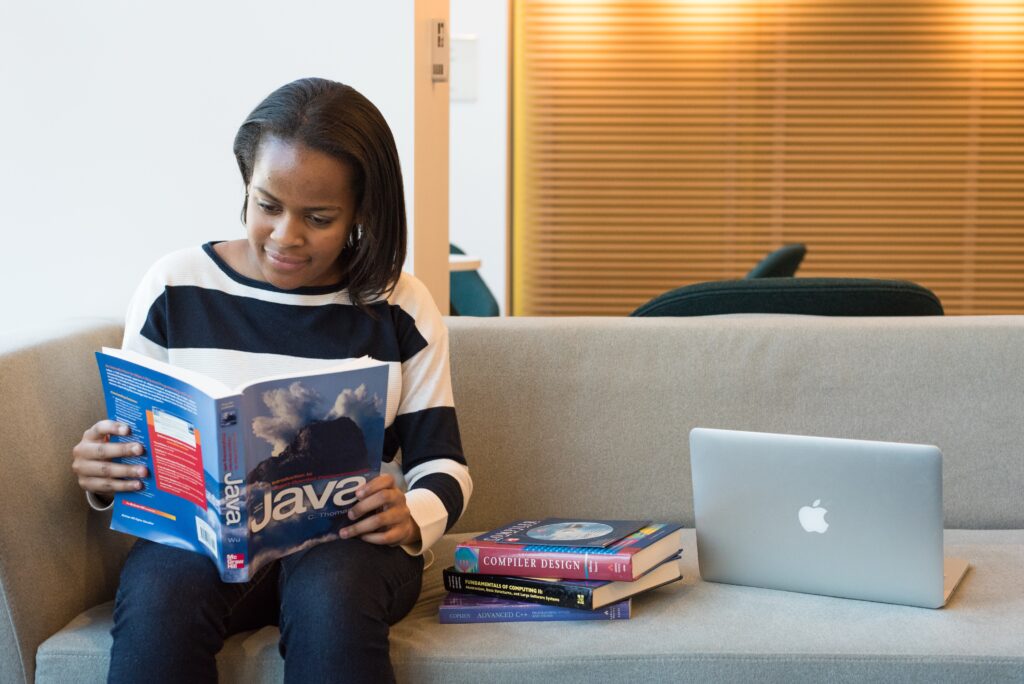When Students are Non-Responsive in Synchronous Online Classes
It can feel confusing or frustrating if a student attends your synchronous online class but does not join a breakout room or reply to you during class. You cannot determine if they are having tech trouble, have walked away from their device, or are simply listening quietly.
It is unlikely that students who are non-responsive or inactive during synchronous online classes intend to disrespect you or others. Many students have competing priorities, technology barriers, and other situations that can affect their full participation. Students are different and learn differently, so some will prefer to actively listen even if they do not respond to you or others.
One of the best ways to minimize student non-responsiveness in synchronous online classes is to plan lesson activities that are clear, relevant, meaningful, and appropriately levelled for students. You may wish to review the post Getting Students to Participate in Breakout Rooms for ideas about structuring and supporting breakout activities to foster participation.
Next, here are some ways to plan for and respond to students who appear to be non-responsive.
Before Class
Take a participation poll.
Provide a poll at the course start that invites students to share how they prefer to participate in your synchronous online class. Options may include:
- Reactions
- Text chat
- Mic
- Camera
- Breakout rooms
- Mentimeter
- Zoom polls
- Zoom annotation
- Collaborative documents (e.g., Padlet)
- Gamified quiz
- Other
When students get some say in how class runs, they may be more likely to participate. Let students know that you may not be able to fully accommodate all preferences based on the lesson outcomes for each class, but you will consider their feedback when you plan activities.
Provide tech tips to support participation
- Give instructions for, demonstrations of, and practice with tech-enabled activities early in the semester. Explain the benefits and limitations of logging into your class meeting with a desktop, laptop, or mobile phone.
- Before each class, let students know how they should be prepared to participate and what tools they will use. Share alternative ways to participate if students’ technology is not functioning.
- Ask students that, if at all possible, they should avoid logging into the class meeting while driving or doing other activities that are likely to divide their attention.
Address participation (and non-participation) in housekeeping
At the beginning of class, set your expectations for participation and explain what you will do when students do not respond during class. Here are some statements you may wish to adapt for your housekeeping announcements.
- “Think about all the things you do in an in-person class. You try to arrive to class on time. You sit facing the front, open your books for note-taking, and pay attention while participating in class activities. This is what I expect what will happen for our synchronous online class as well.”
- “If you have logged on, this means to me you are here to participate to the full extent you are able.”
- “For this class, try to find a quiet, distraction-free area with a way to take notes on what we cover.”
- “We will be engaging in activities today that require your focus and attention. This activity will be most successful if everyone agrees to be fully present for it.”
- “You will get the most out of this class today by participating actively in breakout discussion.”
- “As a habit of my teaching, I will be taking some notes on the general participation in our activities today. I do this to keep track of how my lessons are going to support your learning.”
- “I realize that it may not be easy for you to participate in all aspects of class today, but I hope that if you are having any technical difficulties you will reach out to me rather than just stay silent.”
- “If you need to step away from your device, I ask that you please send me a private message. That way, I can inform the rest of your breakout group.”
- “Get ready to participate in a breakout room activity at this time today. We will be taking a break every hour, and I will let you know when a break is coming.”
- “If I notice that you are not joining your breakout room, I may reach out to you by direct message.”
During Class
Use non-verbal communication
Sometimes students need to “warm up” to participate in class. Start with activities that require them just to give a “thumbs up,” share an emoji, or say yes or no. Then, once you have asked for some measure of engagement, build from there.
Another option, if students are non-responsive, is to use anonymous or written activities rather than speaking activities. Use Chat, Padlet, Mentimeter, or Collaborative document to collect student answers.
Use structure and positive reinforcement
If students are not providing answers to questions right away, they may need more time for responses. Tell students you will set a timer for 30 seconds, giving them time to formulate answers. Give them quiet time. Then reconvene after the time elapses.
Share your appreciation for those who contribute. Take note of good ideas that students volunteer and refer to them again during the lesson. Remind students about the value of contributing to class to make the class more engaging and practice for upcoming assessments.
Keep track
Print out or use a digital copy of your class list, and during each class note who is not responding to even low-barrier activities, direct messages, or breakout room requests.
Encourage non-participants
When you call on students individually for answers, it can be embarrassing and stressful for them. However, you might ask for a response from “those who have not yet contributed in class so far.” Or, you might say several names at once and invite them to share their ideas in chat or on the mic.
Note that this strategy might still result in stress or embarrassment if students still feel they are being “called out” among their peers in class.
Reach out privately
You may wish to contact a non-responsive student via private/direct chat messages. With direct messages, you can ask a student to respond to you without stopping class or embarrassing students in front of their peers.
“Hello [student]. I’ve noticed that you have not yet joined the breakout room for your group. I don’t want you to miss the important discussion in this activity. Please let me know if you are having any difficulties and how I may support you to join your breakout group.”
At first, give students time to respond to your direct message prompt, as they may have technical difficulties or other challenges at their location that limit their ability to communicate with you. You may wish to reach out a few times by direct message (or use your microphone after pausing the recording).
After Class
Reach out again
If the student does not leave the meeting after class ends, you might call on them in a direct message one final time before ending the meeting. Invite them to follow up with you by email or in a one-on-one Zoom meeting to discuss how you can help them to participate in class.
Note: Do not use the Zoom host settings to remove inactive students from your meeting entirely, as they may not be able to log in to the same meeting link again.
Remind students about the value of participation
- Thank those who participated in class activities and breakout discussions, and summarize what was accomplished together in those activities. Re-emphasize the value of participation for their learning.
- Remind students that they are likely to get less out of the class when they do not join breakout rooms and other activities designed to support their learning in the course.
- Invite students to reach out to you if they have any challenges or fears with respect to class activities.
- Provide technology support links (e.g., Teach Me Tech) if students need more practice using Zoom/Teams to participate.
Send a direct email
If you notice a student is repeatedly attending class but not responding to your direct prompts, you may wish to email them directly. By sending a polite message that notes you are observing their non-responsiveness, you let them know that you care about their participation and success in the course.
Dear [Student], I hope this message finds you well. My records from indicate that you have attended the last 3 class meetings, but that you have participated in 0 breakout room discussions. I appreciate that you make the time to attend class, but I have also explained that I expect students to be ready to participate as much as they are able during breakout activities. These discussions are important because they will help you to practice for the upcoming course assessment. I have reached out to you through direct message but have not received a response from you. Perhaps you are having some technical difficulties during class that are making it difficult to connect with me?
I am hoping that we can set a quick Zoom meeting to discuss how I can help you to navigate the Zoom room successfully or discuss any other issues that may be preventing your participation. Your contributions to class are important to me, so I hope that we can find a solution together. Here are a few times I am available to meet this week.
Final Thoughts

There are many reasons why adult learners may not participate in synchronous online classes. In non-graded class activities, your students have the right to choose whether or not they participate in class, regardless of the mode of delivery. However, you are more likely to encourage student engagement in your class when you support and appreciate students participating to any degree they can.
IMPORTANT NOTE: If you suspect a student is experiencing an emergency during your synchronous online class meeting, dismiss the rest of the class and contact Campus Security (519) 748-5220 (x5555) for assistance. Stay in the meeting until help for the student arrives.



